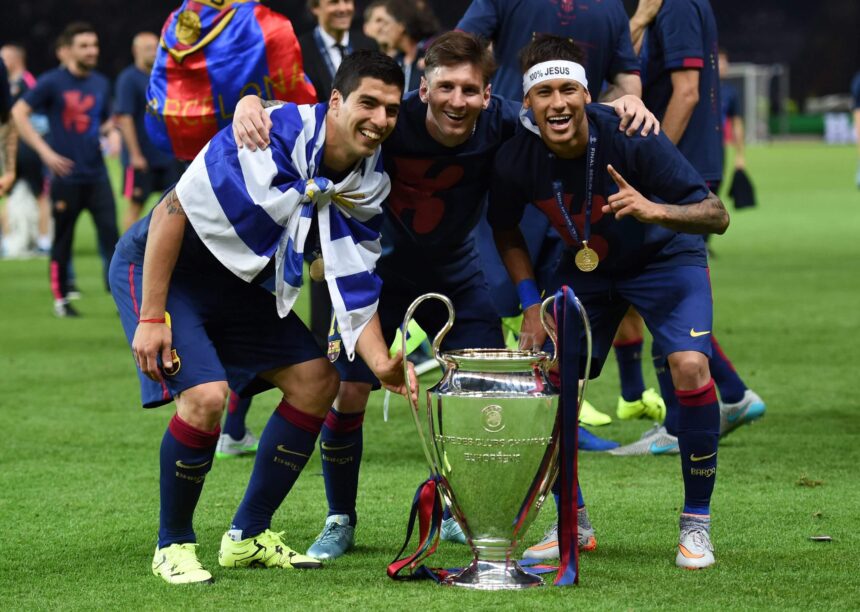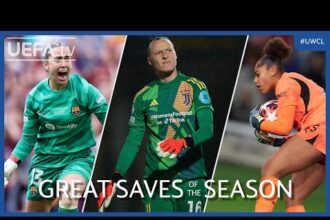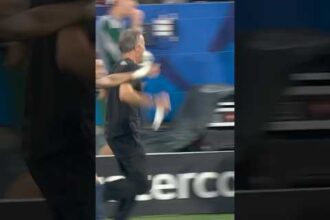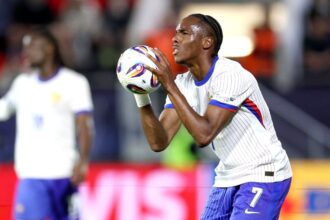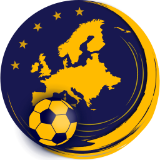Two’s company, three’s a crowd — and when it comes to the Champions League, the latter has the potential to go down in history.
On Wednesday, Robert Lewandowski, Raphinha and Lamine Yamal put on an attacking masterclass as they shone in Barcelona’s 4-0 win over Borussia Dortmund. Their skill, speed and ruthless edge drew comparisons to some of the very best trios that have graced European football in the modern era.
Advertisement
We asked eight of our writers to take a trip down memory lane and reflect on the greatest attacking trios they can remember in the competition’s storied history.
This list isn’t exhaustive, but the talent included is enough to get you whistling the Champions League theme tune.
Lionel Messi, Luis Suarez and Neymar at Barcelona
We could just play the numbers game. In the three years they played together, Messi, Suarez and Neymar scored a combined total of 363 goals in all competitions. In the 2015-16 season alone, they scored 131 between them: 59 for Suarez, 41 for Messi and 31 for Neymar.
But even those astonishing numbers don’t do justice to the brilliance of this trio. It wasn’t just three top-class players carrying an attacking threat, it was three of the most talented forwards in the history of the game combining — again and again and again — in such a mesmerising, instinctive manner that it took the sport to another level.
Suarez, Messi and Neymar fired Barcelona to Champions League glory in 2014-15 (Matthias Hangst/Getty Images)
Barcelona have had a few forward lines like that over the years, going back to Johan Cruyff’s “dream team” of the early 1990s, then the Rivaldo-Kluivert-Saviola triumvirate of the mid-2000s and the various sides Pep Guardiola built, with first Thierry Henry and Samuel Eto’o, and later David Villa and Pedro offering the perfect accompaniments to Messi’s genius.
But the so-called ‘MSN’ partnership that followed in the mid-2010s was something else entirely: three extraordinarily gifted forwards selfless enough to bring out the best in each other.
⭐️ #UCLclassics ⭐️
🔙 in #UCLfinal 2015: @neymarjr 🆚 Juventus ⚽️💪🏆#UCL | @FCBarcelona | @fcbarcelona_br https://t.co/f1v6UsC0hA pic.twitter.com/Fr9RMikmIx
— UEFA.com DE (@UEFAcom_de) April 22, 2020
Oliver Kay
Mohamed Salah, Sadio Mane and Roberto Firmino at Liverpool
In their first of five Champions League seasons as a front three, Mohamed Salah, Sadio Mane and Roberto Firmino did not mess about. They each scored 10 times as Liverpool made it to the 2017-18 final in Kyiv.
Their sweeping counter-attacks will live long in the memory. There was nothing quite like the giddy and exhilarating feeling of watching those three red arrows darting towards goal and into the record books. They restored the meaning of European nights at Anfield and redefined them for an entire generation of fans.
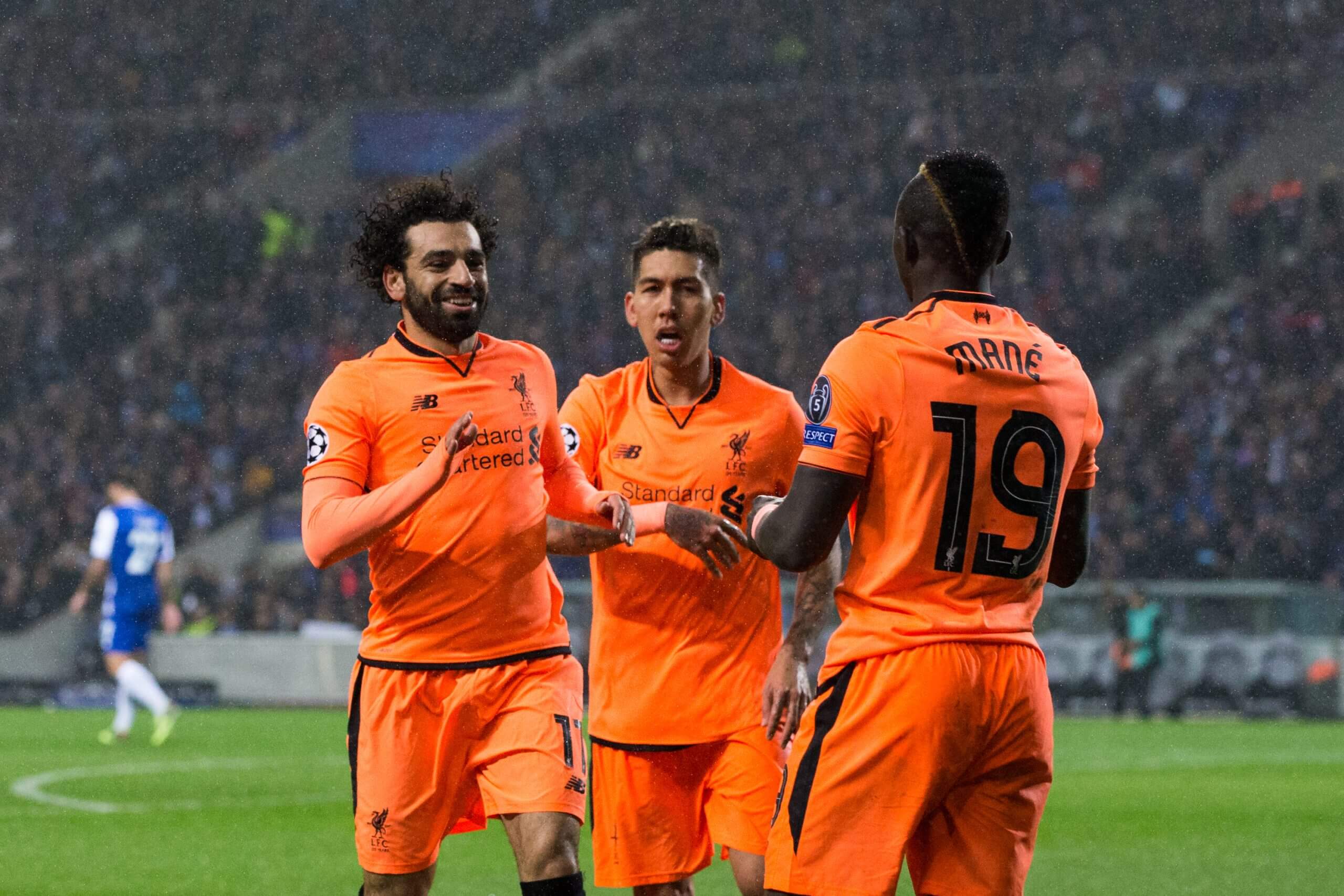
Salah, Firmino and Mane were devastating for Liverpool (Craig Mercer – CameraSport via Getty Images)
In total, Salah, Mane and Firmino scored a combined 338 goals and assisted 139 times in their five campaigns together. Naturally, they saved some of their best work for Champions League nights by scoring 77 goals and 26 assists combined, and they made up for their final defeat to Real Madrid in 2018 by winning the competition in 2019.
Advertisement
And in their last season of Champions League football, just like in their first, they reached a third final, and while they lost to Real Madrid again, they helped rewrite the narrative. Liverpool came back to Europe’s prestige competition in 2017 as underdogs, but going into the 2022 final in Paris, many had them down as favourites.
That stellar front three who never gave up were a big reason why.
Caoimhe O’Neill
Gareth Bale, Karim Benzema and Cristiano Ronaldo at Real Madrid
Let’s get this out of the way early doors — no, Real Madrid’s ‘BBC’ attacking trio of Gareth Bale, Karim Benzema and Cristiano Ronaldo probably did not possess the creative spark of Barcelona’s rival ‘MSN’, but they were devastatingly effective when in full flow.
Take the 2013-14 season, when Madrid ended their long wait for a 10th European Cup/Champions League title — known as ‘La Decima’ in Spanish — and the three players contributed 97 goals across all competitions. A staggering 51 of those efforts were scored by a certain Portuguese star, but Benzema knitted it all together. Bale, meanwhile, recovered from no pre-season following his record move from Tottenham Hotspur to score 22 times and provide 19 assists.
Opposition defences could not cope en route to that title. Benzema, Bale and Ronaldo each scored twice in a 6-1 humiliation of Schalke in a round of 16 first leg.
Bale and Ronaldo helped down Borussia Dortmund in the quarter-final; two goals from Ronaldo in the semi-final second leg against Bayern Munich guided Madrid to a crushing 4-0 win at the Allianz.
Sergio Ramos’ 93rd-minute header took the final against Atletico Madrid to extra time, but Bale’s header after Angel Di Maria’s run finally broke Atletico’s spirit — before Ronaldo predictably removed his shirt following his 120th-minute penalty to make it 4-1.

Benzema, Ronaldo and Bale lift the 2015-16 Champions League (Gonzalo Arroyo Moreno/Getty Images)
There were reports of friction between Ronaldo and Bale — later denied by Bale — and the Welshman’s injuries meant he was not always a mainstay, particularly after falling out of favour under Zinedine Zidane. But the trio still helped Madrid win three Champions League titles in a row from 2016 to 2018 before Ronaldo’s exit to Juventus broke up the band. In the five seasons they played together, they scored 442 goals between them.
Advertisement
Benzema summed up their success best in an interview with RMC Sport in 2019: “You had a rocket, Bale, the scorer, Cristiano, and I was the piece between the two to make it all work.”
Tomás Hill López-Menchero
Arjen Robben, Franck Ribery and Robert Lewandowski at Bayern Munich
First, the obvious point: the potency and the danger they represented.
Arjen Robben and Franck Ribery played with other Bayern forwards — Mario Gomez, Thomas Muller and Mario Mandzukic — but consider the span of attributes among those three when it included Robert Lewandowski. Two of the most dangerous out-to-in wingers in Champions League history coupled with — perhaps — the best one-touch, close-range finisher the competition has ever seen.
What else do you need? That trio, together, had a wonderful symmetry and balance to it, and the reliability of its output was really what gave Bayern that sense of inevitability during their imperial phase.
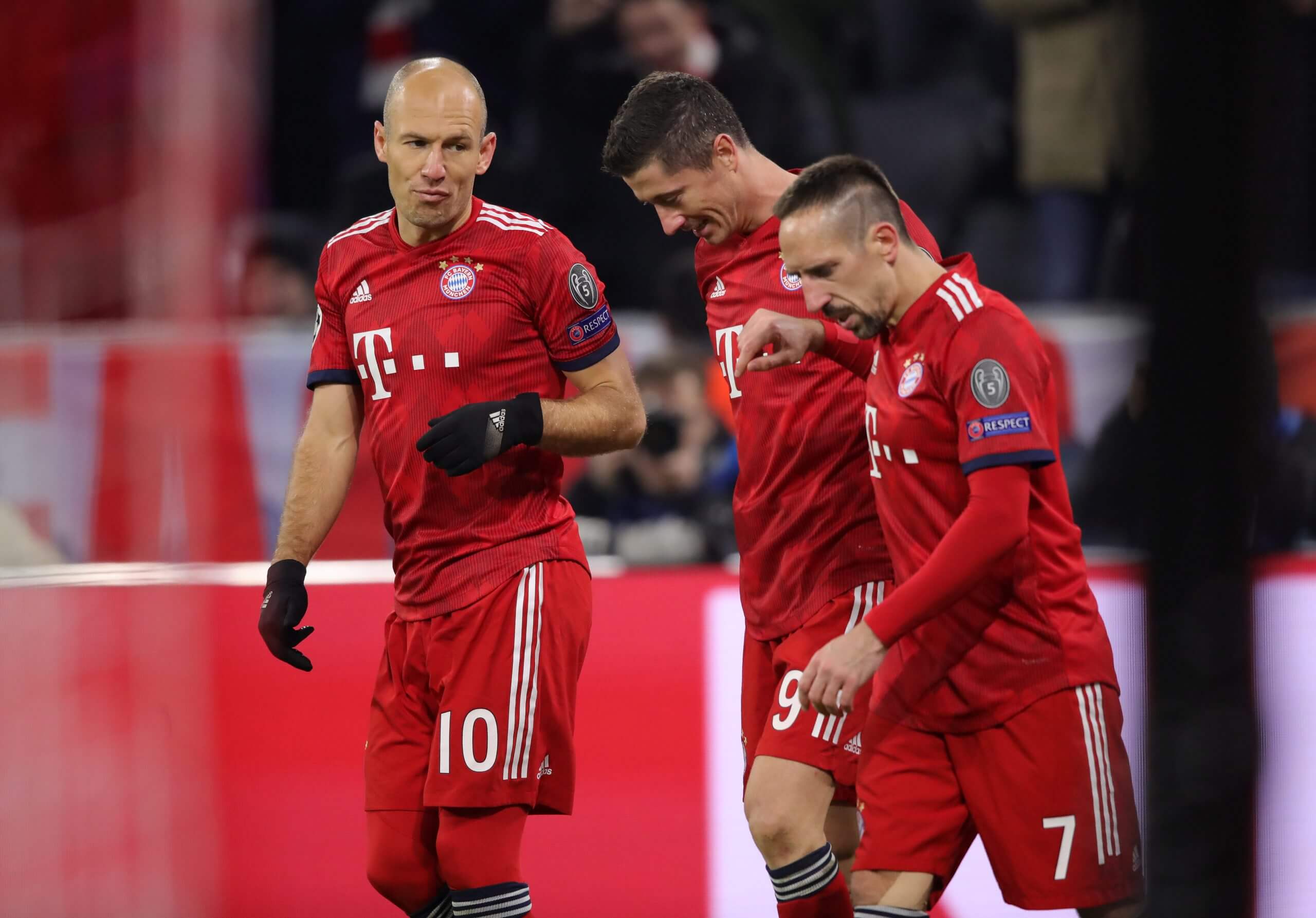
Robben, Lewandowski and Ribery shone at Bayern (Alex Hassenstein/Getty Images)
But what often gets missed, particularly with Ribery and Robben, is the relentlessness. They were killers. Emotionally resilient. They may have been decadently gifted with the ball at their feet — Robben with those frantic touches, Ribery with his crab-like gait — but they also kept going at their opponents, again and again, and never lost faith in their ability to make a defence crack.
A nightmare to face, surely, and near impossible to subdue.
Seb Stafford-Bloor
Lionel Messi, Pedro and David Villa at Barcelona
This is Messi’s second entry onto the list and, in truth, it could be made up of every front line he ever played in. But my favourite is the team from Pep Guardiola’s third season at Barcelona, when they won La Liga and won back the Champions League.
The previous season, Guardiola had brought in Zlatan Ibrahimovic but lost his team’s dynamism in doing so. So in summer 2010, he rebuilt around speed and around Messi. Ibrahimovic was gone, David Villa came in, and the system clicked perfectly into place: Messi in a deep central role, Villa and Pedro high and wide, attacking the space behind the defence, creating the space for Messi to shine in.
Advertisement
Its genius was in its simplicity. But even if you grasped the theory, it was impossible to stop. The 2011 Champions League final was its climax and the ultimate proof of its strength. Manchester United were scared of the speed of Villa and Pedro, who scored the first. They sat back and Messi scored the second. Villa added the third in the second half.
It was the culmination of a season of the best football you will ever see.
The nail in the coffin. @Guaje7Villa @ChampionsLeague 2011 #OnThisDay pic.twitter.com/gc136bf52f
— FC Barcelona (@FCBarcelona) May 29, 2020
Jack Pitt-Brooke
Cristiano Ronaldo, Wayne Rooney and Carlos Tevez at Manchester United
Strictly speaking, they weren’t a front three, but if anything, that only made Wayne Rooney, Cristiano Ronaldo and Carlos Tevez even harder to defend against.
Look at a team sheet from Manchester United’s 2007-08 campaign, and Rooney and Tevez are typically listed as a front two, with Ronaldo nominally playing wide right. But then how many archetypal chalk-on-your-boots wingers score 42 goals in 49 games, as the Portuguese did that year?
That tells you everything about how this other United trinity actually played on the pitch as opposed to on paper — as a fluid, interchangeable blend of power, technique, and aggression, granted the freedom to come at opponents from all angles.
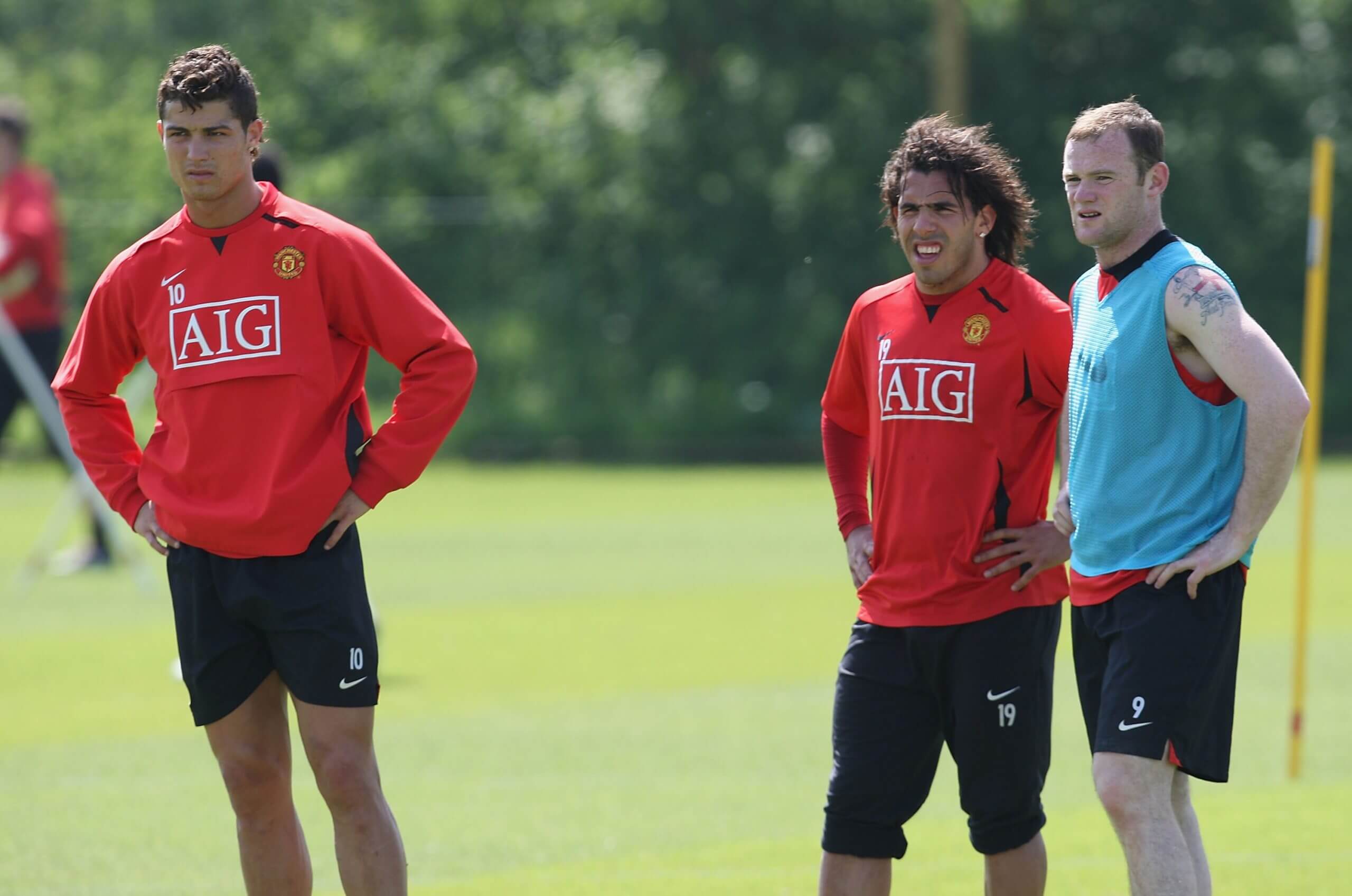
Ronaldo, Tevez and Rooney were not your typical front three (John Peters/Manchester United via Getty Images)
Together, they hit a combined 79 goals during the 2007-08 campaign — including 16 in the Champions League, and all but one of United’s knockout stage goals on the way to beating Chelsea in the Moscow final.
Another 61 followed the season after, including Ronaldo’s Puskas-winning piledriver away at Porto in the last eight. So did a second consecutive Champions League final, this time ending in defeat to Barcelona in Rome.
Ronaldo against Porto = 🚀🤯#UCLdraw | @juventusfcen pic.twitter.com/HJ4PysyDuK
— UEFA Champions League (@ChampionsLeague) December 14, 2020
By then, the band was breaking up. Ronaldo’s head had been inexorably turned towards Real Madrid. Tevez, already sidelined by Dimitar Berbatov’s signing, did not start the 2009 final and went on to damage his standing among United’s supporters by joining Manchester City.
A little over a year after Moscow, Rooney was the only one left. Speaking to the Stick to Football podcast last year, he agreed that his days alongside Ronaldo and Tevez was the peak of his playing career.
Advertisement
“Unfortunately, we were in the era of that Barcelona team, which were incredible,” he said. “But for those few years, you felt unstoppable.”
Mark Critchley
Samuel Eto’o, Lionel Messi and Ronaldinho at Barcelona
Ranking Barcelona’s greatest attacking units is a task both as absurdly difficult as it is rewarding. You have to pore over so many combinations — but you also get to remember them all along the way.
And this mid-Noughties trio was everything: laden with creativity, generational talent and goals.
You’ve got Samuel Eto’o scoring for fun, winning the La Liga golden boot in 2005-06. You’ve got Ronaldinho as the showboating Obi-Wan Kenobi, teaching a teenage Lionel Messi how to handle the force.
Just to witness either one of those mercurial players dovetailing with a goal machine like Eto’o would be special — but both? A Ronaldinho in the prime of his years, having helped Barca win back-to-back Spanish league titles (2004-05, 2005-06) and the Champions League in 2006, even if his star had begun to wane near the end of their triumvirate (he would join Milan in 2008).
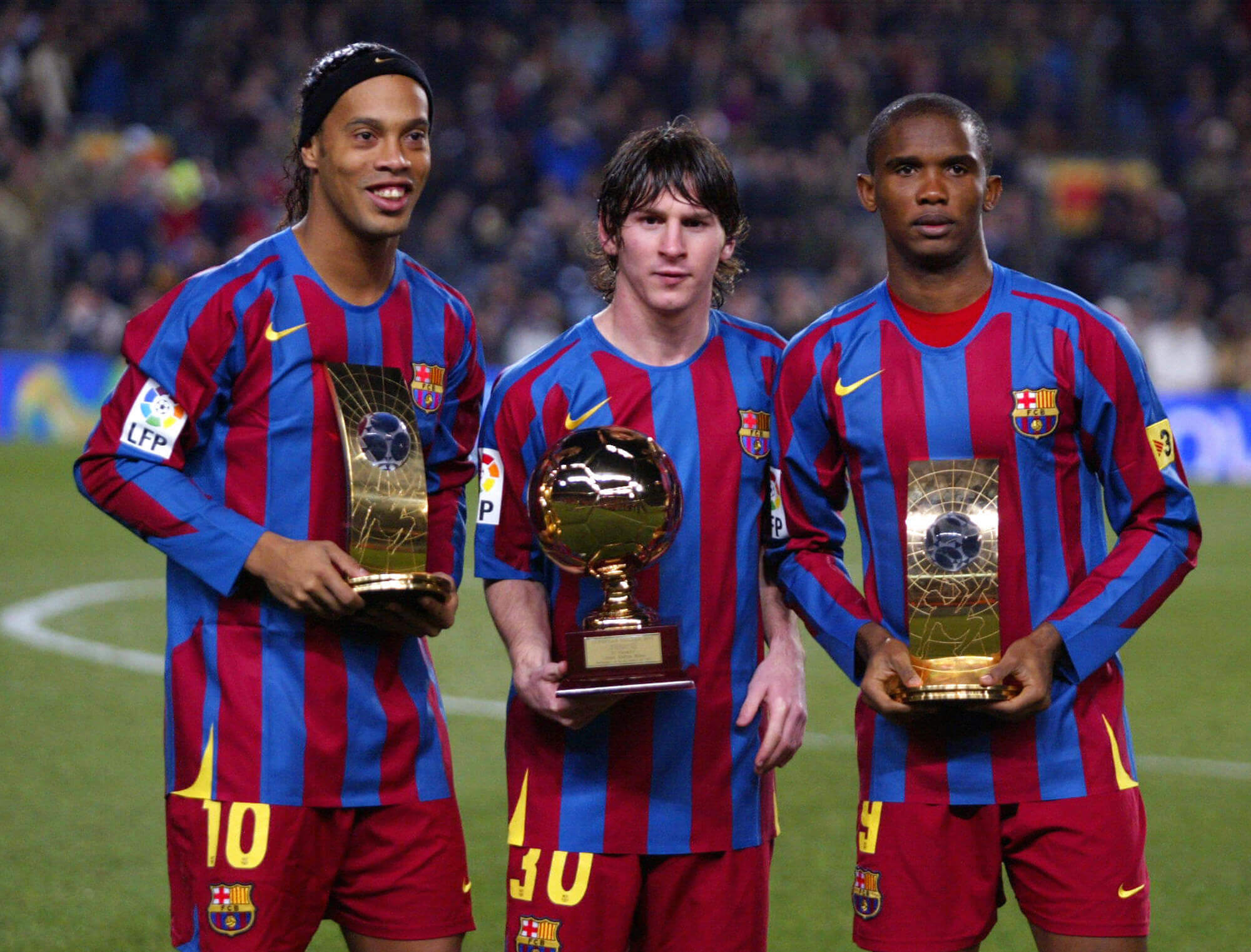
Ronaldinho, Messi and Eto’o were individually and collectively brilliant (Cesar Rangel/AFP via Getty Images)
Meanwhile, Messi was watching and learning. The staggering flow of goals had not fully arrived for the Argentinian at that point, although he became the first Barca player to win the Golden Boy award, aged 18, in 2005.
Perhaps the Bernabeu Clasico in that 2005-06 season showcased the trio’s brilliance best. Considering they were up against a not-too-shabby Real Madrid side itself, featuring David Beckham, Zinedine Zidane and Ronaldo, among others, Barca dominated, with Eto’o and Ronaldinho scoring wonderful goals, and Messi a constant threat in a manner which suggested what was to come.
Greg O’Keeffe
Alessandro Del Piero, Fabrizio Ravanelli and Gianluca Vialli at Juventus
You won’t find any numbers here. This trio are from a time before football was gripped by statistics, before anyone discussed revenue, and before players could be ‘pure profit’.
They represent an era when football was all heart, and that rich, beating heart was in Italy; Serie A undoubtedly the best league in Europe, this trio as that league’s apotheosis.
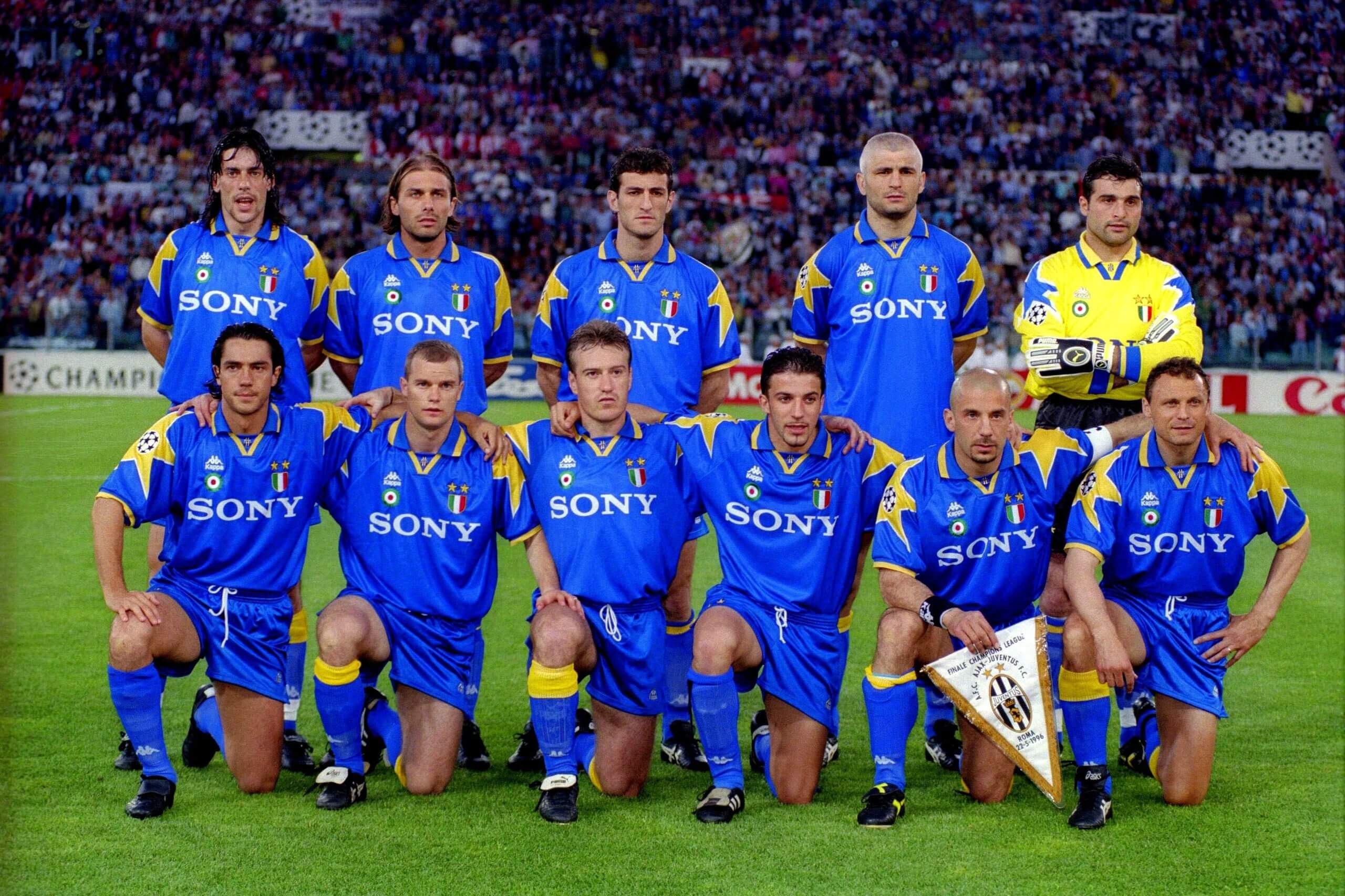
Ravanelli (back row, second from right), Del Piero and Gianluca Vialli (front row, third and second from right) (Alessandro Sabattini/Getty Images)
The way they could move the ball, control the ball, control the game; and they looked so perfect doing it: the shining Gianluca Vialli, Fabrizio Ravanelli with his distinctive white hair, and Alessandro Del Piero, who, at this point, had his pirate-esque sideburns that just kept going and going…
In the summer of 1996, the three of them took Juventus to the Champions League final in Rome. Ravanelli scored their only goal, Ajax equalised, and the Italians won on penalties.
Advertisement
After the final, Vialli left for Chelsea, Ravanelli left for Middlesbrough and Del Pierro stuck around at Juventus until 2012, but for that season, they caused beautiful panic in back lines across Europe, and they did it with an air of superiority that was merited.
Andrew Hankinson
(Top photo: Matthias Hangst/Getty Images)


